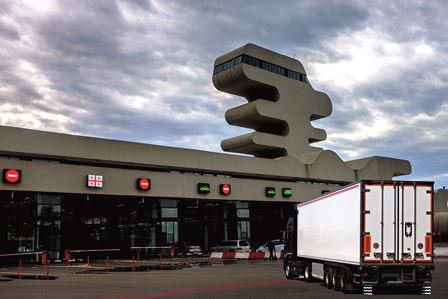
Georgia and Turkey have taken a significant step this week in strengthening the digital link between them by agreeing to electronically exchange customs data so that transport across the Georgian-Turkish borders will be faster and cheaper.
The Minister of Finance of Georgia, Nodar Khaduri, and the Minister of Customs and Trade of Turkey, Bülent Tüfenkci, signed a Protocol on electronic data exchange in the framework of a joint eTIR Pilot Project. The protocol was signed on 26 January in Ankara on the occasion of International Customs Day.
Turkey and Georgia have long been important trading partners and the volumes of trade between them are on the rise. In 2015, 17% of Georgian imports originated from Turkey and the total trade between both counties reached USD 1.5 billion. One of the factors that allow this trade to flow so freely between the two countries is their use of the TIR procedure.
The TIR procedure is governed by a multilateral treaty, the TIR Convention, and simplifies border crossing by establishing a customs transit system allowing sealed trucks and containers to cross multiple borders with a single customs document and a unique guarantee, thus increasing speed and decreasing costs of international transports while protecting governments against the loss of duties and taxes.
The eTIR pilot project will improve the benefits brought by the TIR Procedure by ensuring the advanced electronic exchange of data related to TIR transports crossing the Georgian-Turkish borders. One of the key aims is to improve risk assessment procedures, that is to say allowing governments to evaluate the risk of a TIR transport passing through their countries well in advance of it reaching their border and, thus, help to prevent smuggling, terrorism, illegal trade and immigration.
The eTIR pilot project between Georgia and Turkey started as part of the UNECE led project "Strengthening the capacities of developing countries and countries with economies in transition to facilitate legitimate border crossing, regional cooperation and integration" and represents a significant step towards the full computerization of the TIR procedure.
Signing the protocol demonstrates the willingness of both countries to integrate the computerization of the TIR procedure in their overall effort to improve the work of customs administrations by means of the use of Information and Communication Technologies.